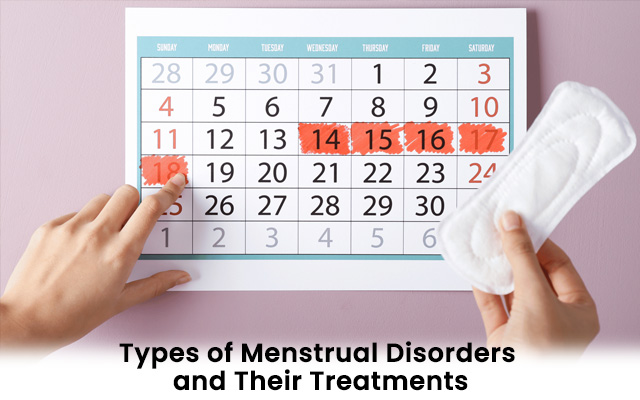Menstrual disorders are more common than you might think, and they can disrupt your daily life if not properly managed. From irregular cycles to extremely painful periods, these disorders vary in their nature and severity. Understanding the different menstrual disorder types can help you identify symptoms early and seek the right treatment. Let’s dive into some of the most common types of menstrual disorders and how they are treated.
Dysmenorrhea (Painful Periods)
Dysmenorrhea refers to the intense pain and cramping that some women experience during menstruation. This can either be primary (without any underlying health issue) or secondary (caused by other conditions like endometriosis or fibroids).
Treatment:
- Over-the-counter pain relievers (e.g., ibuprofen)
- Hormonal birth control to regulate periods
- Heat therapy (e.g., using a heating pad)
- If secondary dysmenorrhea is diagnosed, treating the underlying condition may also help reduce pain.
Amenorrhea (Absence of Periods)
Amenorrhea occurs when a woman of reproductive age does not have her period. It can be primary (never had a period by age 16) or secondary (missed periods for three or more consecutive months). Causes range from hormonal imbalances to excessive exercise, stress, or conditions like polycystic ovary syndrome (PCOS).
Treatment:
- Hormonal therapy, such as birth control pills, to restore balance
- Addressing lifestyle factors, like reducing stress or modifying exercise routines
- Treatment of any underlying conditions, such as thyroid or pituitary disorders
Menorrhagia (Heavy Menstrual Bleeding)
Menorrhagia involves excessively heavy or prolonged menstrual bleeding. This can cause fatigue, anemia, and disrupt daily activities. It is often linked to conditions like hormonal imbalances, uterine fibroids, or blood clotting disorders.
Treatment:
- Hormonal therapies like birth control pills or intrauterine devices (IUDs) to reduce bleeding
- Non-hormonal medications like tranexamic acid or NSAIDs to manage bleeding
- In severe cases, surgical options like endometrial ablation or hysterectomy may be recommended.
Oligomenorrhea (Infrequent Periods)
Oligomenorrhea is when menstrual cycles occur more than 35 days apart, or fewer than eight periods per year. It’s often caused by hormonal imbalances, extreme weight loss or gain, and conditions like PCOS.
Treatment:
- Lifestyle changes, such as achieving a healthy weight
- Hormonal treatments, including birth control pills
- Treatment of underlying conditions like PCOS or thyroid dysfunction
Premenstrual Syndrome (PMS)
PMS includes a variety of emotional and physical symptoms that occur before menstruation. These symptoms may include mood swings, bloating, and headaches, and can interfere with daily activities.
Treatment:
- Lifestyle modifications such as regular exercise and a healthy diet
- Stress management techniques
- Medications like antidepressants or birth control pills to regulate hormone levels
Conclusion
Understanding the various menstrual disorder types and their treatments can help you find relief and improve your quality of life. If you experience any of these issues, don’t hesitate to consult a healthcare provider to explore your options.
If you’re struggling with menstrual disorders, feel free to reach out to the best menstrual disorder doctor in Dumdum for expert advice and tailored treatment plans.
 8282867107
8282867107 sukhamoy83@gmail.com
sukhamoy83@gmail.com
